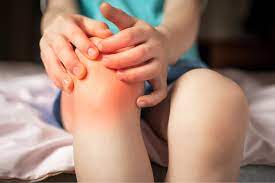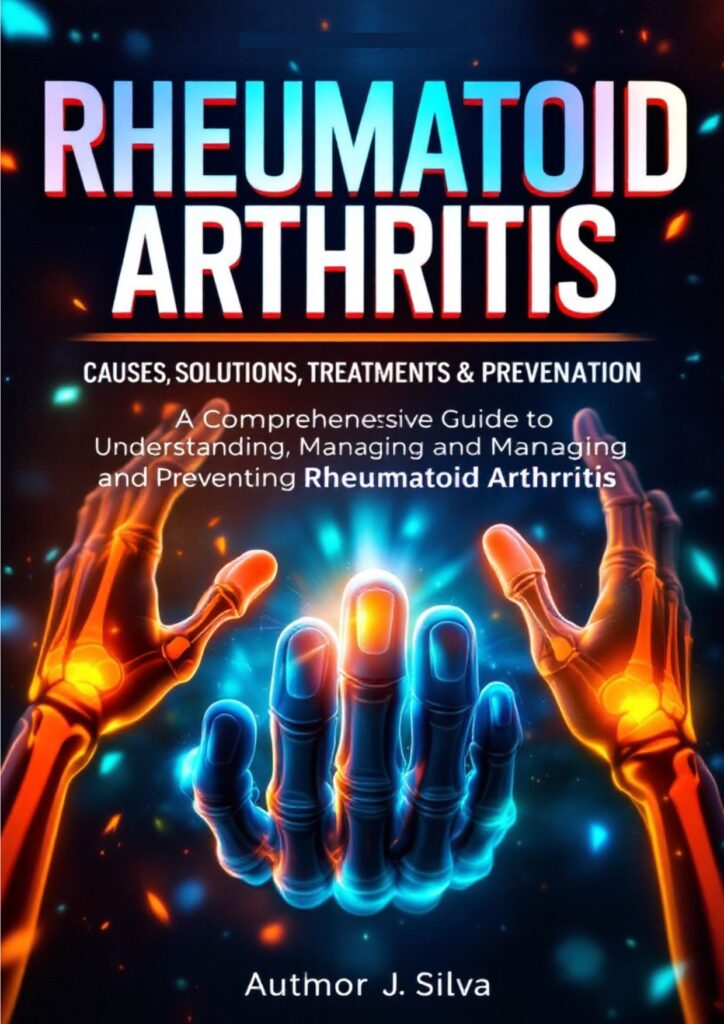
Introduction
Juvenile rheumatoid arthritis (JRA), more commonly known now as juvenile idiopathic arthritis (JIA), is a chronic inflammatory joint disease in children under 16 years of age. It can cause pain, swelling, stiffness, fatigue, and growth issues. In this article, I’ll take you through everything you need to understand—from causes and signs to treatments and living with this condition—as if I were guiding a parent or patient through the journey.

Understanding Juvenile Rheumatoid Arthritis
What is Juvenile Rheumatoid Arthritis (JRA / JIA)?
Juvenile rheumatoid arthritis is the older term frequently used to describe chronic arthritis beginning in childhood. Nowadays, the umbrella term juvenile idiopathic arthritis (JIA) is preferred by many clinicians and researchers to encompass multiple subtypes of chronic childhood arthritis.

To meet criteria, arthritis must persist for at least 6 weeks and begin before 16 years of age. (NCBI: JIA review) JIA includes several subtypes—oligoarticular, polyarticular (RF-positive or RF-negative), systemic onset, enthesitis-related, and others. Each subtype differs in presentation, prognosis, and therapy.
Epidemiology & Subtypes
- JIA is the most common chronic rheumatic disease in children.
- Incidence varies by region, but estimates in North America and Europe range widely.
- The oligoarticular subtype (affecting ≤4 joints in first 6 months) is among the most common.
- RF-positive polyarticular JIA is less common, often occurring in later childhood or adolescence.
- Systemic-onset JIA (sJIA) is characterized by systemic symptoms like fevers, rash, and internal inflammation. (PubMed: autoimmunity & JIA)
Causes and Pathogenesis of Juvenile Rheumatoid Arthritis
Genetic & Environmental Factors
JIA is believed to arise from a complex interplay between genetic predisposition and environmental triggers. Multiple genes—such as HLA variants, PTPN22, TNFA, IL2RA, and others—have been implicated.
Environmental factors may include infections, microbiome changes, or other unknown triggers that initiate immune dysregulation. Over time, the immune system becomes misdirected, attacking the synovial membranes of joints.
Immunology & Inflammation
In JIA, the synovium becomes inflamed, with infiltration of immune cells (T cells, B cells, macrophages) releasing cytokines such as TNF-α, IL-6, IL-1, and others. This leads to joint swelling, pain, cartilage breakdown, and potential bone damage.
The systemic subtype (sJIA) may initially act through innate immune pathways (fever, macrophage activation) before shifting to a more autoimmune phenotype over time.
Signs and Symptoms of Juvenile Rheumatoid Arthritis
Common Clinical Features
Children with JRA often present with:
- Persistent joint pain, swelling, and stiffness
- Morning stiffness that improves during the day
- Decreased range of motion
- Limping or reluctance to walk or play
- Fatigue, malaise, and general discomfort
- Joint warmth and tenderness
When treatment for rheumatoid arthritis in fingers is relevant, in polyarticular subtypes, small joints of the hands and fingers can become affected, causing reduced grip strength and difficulty with tasks.
Systemic & Unusual Symptoms
Some children—especially in systemic JIA—may also have:
- Fevers (daily spikes)
- Rash
- Enlarged lymph nodes, spleen or liver
- Serositis (pleura, pericardium)
- Growth delay or leg length discrepancies
- Eye involvement, such as uveitis
Because children are growing, joint inflammation can affect bone growth, leading to deformities or asymmetries over time.
Seronegative JRA / RF-Negative Cases
Many children with JRA are seronegative—meaning they test negative for rheumatoid factor. This is especially true in younger onset or oligoarticular forms. The absence of RF does not rule out JRA.
In RF-negative cases, diagnosis relies more heavily on clinical features, imaging, and exclusion of other causes.
Diagnosing Juvenile Rheumatoid Arthritis
Clinical Evaluation
A thorough history and physical exam are foundational. A physician will assess:
- Duration and pattern of joint symptoms
- Number and symmetry of joints involved
- Presence of systemic symptoms (fever, rash)
- Growth patterns and functional impairments
- Eye exams (risk of asymptomatic uveitis)
Laboratory Tests
- CRP and ESR to measure inflammation
- Complete blood count (CBC)
- ANA (antinuclear antibody), RF, anti-CCP in selected cases
- Other autoimmune panels if needed
Note: RF positivity is less common in JIA than in adult RA, and its presence may suggest a more aggressive polyarticular subtype.
Imaging & Diagnostic Tools
- X-rays to assess joint damage or growth plate involvement
- Ultrasound and MRI to detect synovitis not evident on exam
- Imaging of temporomandibular joint (TMJ) may be important, as JIA often affects the jaw joint.
It’s vital to exclude other causes of arthritis in children, such as infection, trauma, leukemia, or other rheumatic conditions.
Treatment Options for Juvenile Rheumatoid Arthritis
Goals of Treatment
- Control inflammation and pain
- Prevent joint damage and deformity
- Preserve growth and function
- Maintain quality of life
Conventional Therapies
- NSAIDs & Corticosteroids
- NSAIDs (ibuprofen, naproxen) help symptomatic relief
- Corticosteroids (systemic or intra-articular) are used short-term to suppress flare-ups
- Disease-Modifying Anti-Rheumatic Drugs (DMARDs)
- Methotrexate is a cornerstone therapy
- Sulfasalazine, leflunomide may be used in certain cases
- Biologics and Targeted Therapies
- TNF inhibitors (etanercept, adalimumab)
- IL-6 inhibitors, IL-1 blockers (especially in systemic JIA)
- Newer agents targeting specific pathways
Because JRA may involve small joints (fingers), treatment for rheumatoid arthritis in fingers is considered in polyarticular disease to prevent functional loss.
Monitoring & Adjustments
Treatment is often adjusted based on response, side effects, and growth considerations. Some patients may need combination therapy.
Supportive & Adjunct Therapies
- Physical therapy, occupational therapy
- Assistive devices and splints
- Nutritional support and growth monitoring
- Eye surveillance and care
Given the risk of immunosuppression, vaccinations and infection prophylaxis are important.
💪 Discover Natural Relief for Your Joints with JointVive
If you’ve been searching for a natural, effective way to restore joint comfort and flexibility, JointVive could be exactly what your body needs.
Unlike anything you’ve tried before, JointVive is powered by a unique, closely guarded formula crafted to support joint comfort, flexibility, and overall mobility.
With its potent blend of rare, premium-quality ingredients, it works from within to help reduce stiffness, soothe discomfort, and promote long-term joint health — so you can move freely and live without limits.
👉 Take the first step toward lasting relief — try JointVive today and feel the difference for yourself!
Living with Juvenile Rheumatoid Arthritis
Self-Care & Lifestyle Strategies

- Encourage regular, gentle exercise to maintain mobility
- Use joints wisely and avoid overuse
- Balanced diet rich in anti-inflammatory foods
- Adequate rest and sleep
- Emotional support, counseling, and peer groups
Managing RA Fatigue
Fatigue is a frequent complaint in JIA. Strategies include pacing activities, rest breaks, and prioritizing tasks.
Long-Term Outlook
Many children achieve remission or low disease activity with modern therapies. Some may carry JRA into adulthood. Early and aggressive treatment improves long-term function and reduces joint damage.
Get Your Ultimate Guide to Rheumatoid Arthritis Now!
Are you struggling with rheumatoid arthritis or worried about the early signs of RA? Don’t wait until the pain gets worse! Our comprehensive eBook, Rheumatoid Arthritis: Causes, Solutions, Treatments & Prevention, is your complete guide to understanding RA, managing symptoms, and preventing joint damage.
Inside this eBook, you’ll discover:
- Detailed explanations of rheumatoid arthritis symptoms and RA symptoms
- Proven strategies for rheumatoid arthritis treatment
- How to recognize early signs of rheumatoid arthritis before serious damage occurs
- Lifestyle tips, exercises, and diet plans for arthritis in fingers and other affected joints
- Expert advice for living a healthy, active life with RA
🔥 Don’t let rheumatoid arthritis control your life! Take the first step towards relief and empowerment.
FAQ – Juvenile Rheumatoid Arthritis
Q1: Can children outgrow juvenile rheumatoid arthritis?
A1: Some children achieve remission, but others may have lifelong disease progression. Early and effective management increases the chances of better outcomes.
Q2: Is juvenile rheumatoid arthritis the same as adult rheumatoid arthritis?
A2: They share similarities in autoimmune inflammation, but JRA often involves growth plates, different joint patterns, and distinct subtypes.
Q3: What are the signs and symptoms of rheumatoid arthritis in children?
A3: Persistent joint swelling, morning stiffness, reduced mobility, fatigue, and sometimes systemic features like fever or rash.
Q4: Why do many children test negative for rheumatoid factor?
A4: RF is less commonly positive in children than adults. Many JIA patients are RF-negative; diagnosis relies on clinical picture and imaging.
Q5: What happens if treatment is delayed?
A5: Delayed treatment can lead to irreversible joint damage, growth disturbance, deformities, and lower quality of life.
Conclusion
Understanding juvenile rheumatoid arthritis (JRA / JIA) is key to early detection, proper treatment, and improved outcomes. With modern therapies, many children achieve control and lead active lives. The challenges of growth, joint protection, and fatigue demand a holistic approach that blends medical treatment, self-care, and long-term support.
If you or your child show signs suggestive of juvenile rheumatoid arthritis, seek evaluation by a pediatric rheumatologist as soon as possible. Early intervention can make all the difference.
SEE MORE: Rheumatoid Factor: Causes, Testing, and Its Role in Rheumatoid Arthritis
Disclaimer: This article is for informational purposes only and does not replace the advice of a healthcare professional. Consult a doctor or nutritionist before starting any supplementation. Some links in the text are affiliate links, which means we may receive a commission if you make a purchase. This does not impact the price for you and helps us continue to bring you quality content.


2 comentários sobre “Juvenile Rheumatoid Arthritis: A Comprehensive Review”